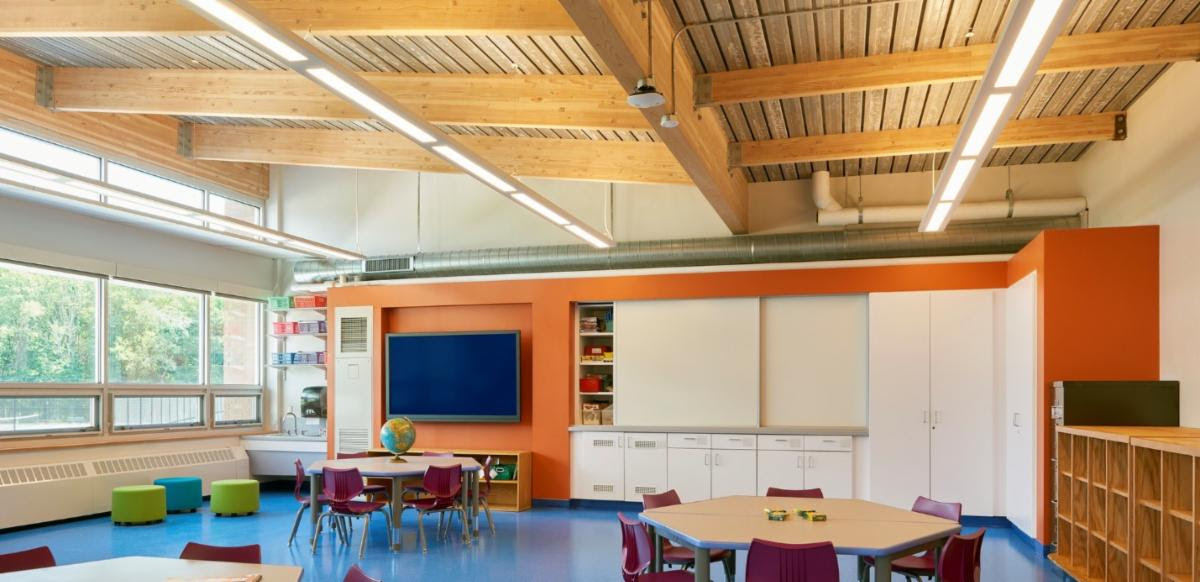
On October 18, residents of the Katonah-Lewisboro School District will vote on a $49.5 million capital projects referendum to address teaching and learning environments, sustainability and security in our school buildings. The District projects that New York State aid will reimburse about 31% of the project (approximately $17.1 million).
Until October 18, when votes will be cast, we are highlighting various aspects of the proposal.
Today, KLSD’s Director of Facilities and Operations Paul Christensen and KLSD parent and member of the District’s Facilities Committee, architect Niall Washburn, share how the proposal relates to the district’s commitment to sustainability.
Q: What sustainability measures are already in place in the District?
PC: Katonah-Lewisboro Schools have pursued a variety of sustainability measures since 2008 including K-12 cafeteria composting, installation of solar panels at the middle and high schools and parking lot lights powered by wind turbines at all schools.
Q: What sustainability measures are included in the proposed bond?
PC: The proposed capital project would include no new fossil fuel use in any buildings and would eliminate fossil fuel heating at Katonah Elementary School, which would be converted to geothermal energy.
The proposed conversion to geothermal coincides with the need to replace the existing heating system at KES, which is more than 25 years old.
NW: The KES geothermal will serve as a pilot that will help the District test where similar conversions to geothermal at other school buildings would be practical. The environmental advantages and fuel savings are significant, especially with oil prices so high, but our Committee felt the District should wait to convert other buildings to geothermal until their existing heating equipment is due for replacement.
With geothermal technology, the whole building at KES would also be air conditioned, and so the building could serve as a facility for summer programs. With geothermal, KES will be head and shoulders above most of the school buildings in Westchester in terms of sustainability.
PC: This is a big step toward meeting the coming goals that NYS has outlined for all businesses and organizations to reduce greenhouse gases. And there’s more legislation coming. School districts need to address these things earlier than private corporations because projects take so much longer.
The focus has been on the reduction of greenhouse gases, which we have verified through third party audits about every five years. We have also monitored the performance of the buildings through bench-marking programs offered by the state, and the district signed an energy performance contract in 2014. This has led to a 23% reduction in energy use districtwide.
The proposal also includes installation of air conditioning in parts of each building. These would all involve energy-efficient air source heat pumps (except KES, where the AC would come from ground-source/geothermal). All the district’s electricity comes from 100% renewable sources, so even though we may be slightly expanding energy use with the additional air conditioning, we are not expanding our greenhouse gas inventory.
NW: The Facilities Committee carefully selected the parts of each building that get particularly hot in spring and fall for the installation of the air source heat pumps for air conditioning. These areas can also be used for summer programming.
PC: We are also proposing work on the building envelope, replacing doors, windows, and some roofing, where necessary. Roof repairs include improved insulation and we still have many single pane windows, which will be replaced with more thermally efficient windows.
Q: How would these sustainability measures affect the learning environment?
NW: The two things go hand-in-hand. When choosing which learning areas to redesign, the Facilities Committee always looked at user comfort as well as energy saving features, because we know that there is an impact in learning when teachers and students are in a healthier learning environment. The proposed upgrade to the science wing at the high school is a case in point. It is really a building that time forgot and dates back to the 50s. The proposed renovation will include changes to the roof structure to provide daylighting features, so that students will benefit from increased natural light. The classrooms will also have zoned lighting so that artificial lighting only comes on when and where needed.
When it comes to sustainability, the Katonah-Lewisboro School District is among the pioneers in the region. As a parent and resident, I am proud of that and of the fact that our buildings are generating very little pollution while providing healthier teaching and learning environments for our teachers and students.
Full details about the district’s sustainability initiatives can be found here.